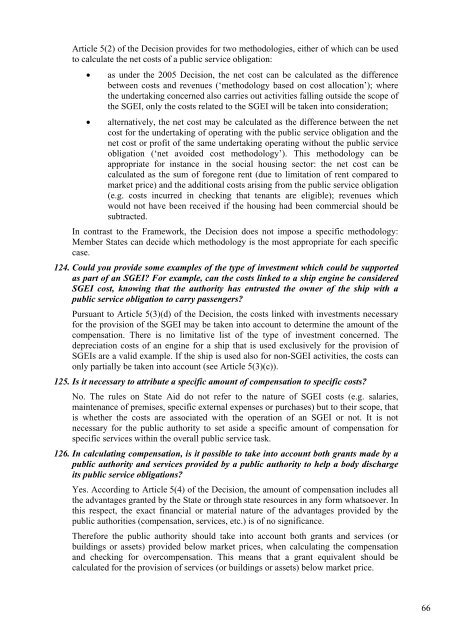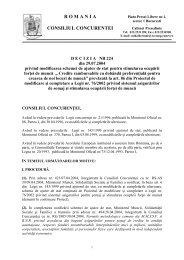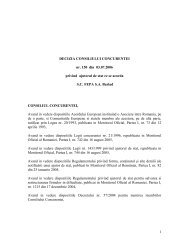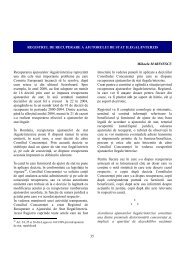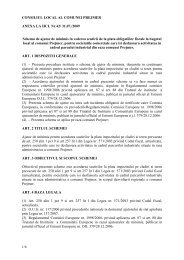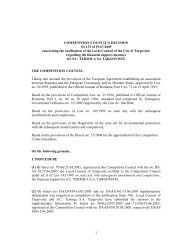Brussels, 15.2.2013 SWD(2013) 53 final COMMISSION STAFF ...
Brussels, 15.2.2013 SWD(2013) 53 final COMMISSION STAFF ...
Brussels, 15.2.2013 SWD(2013) 53 final COMMISSION STAFF ...
Create successful ePaper yourself
Turn your PDF publications into a flip-book with our unique Google optimized e-Paper software.
Article 5(2) of the Decision provides for two methodologies, either of which can be usedto calculate the net costs of a public service obligation:• as under the 2005 Decision, the net cost can be calculated as the differencebetween costs and revenues (‘methodology based on cost allocation’); wherethe undertaking concerned also carries out activities falling outside the scope ofthe SGEI, only the costs related to the SGEI will be taken into consideration;• alternatively, the net cost may be calculated as the difference between the netcost for the undertaking of operating with the public service obligation and thenet cost or profit of the same undertaking operating without the public serviceobligation (‘net avoided cost methodology’). This methodology can beappropriate for instance in the social housing sector: the net cost can becalculated as the sum of foregone rent (due to limitation of rent compared tomarket price) and the additional costs arising from the public service obligation(e.g. costs incurred in checking that tenants are eligible); revenues whichwould not have been received if the housing had been commercial should besubtracted.In contrast to the Framework, the Decision does not impose a specific methodology:Member States can decide which methodology is the most appropriate for each specificcase.124. Could you provide some examples of the type of investment which could be supportedas part of an SGEI? For example, can the costs linked to a ship engine be consideredSGEI cost, knowing that the authority has entrusted the owner of the ship with apublic service obligation to carry passengers?Pursuant to Article 5(3)(d) of the Decision, the costs linked with investments necessaryfor the provision of the SGEI may be taken into account to determine the amount of thecompensation. There is no limitative list of the type of investment concerned. Thedepreciation costs of an engine for a ship that is used exclusively for the provision ofSGEIs are a valid example. If the ship is used also for non-SGEI activities, the costs canonly partially be taken into account (see Article 5(3)(c)).125. Is it necessary to attribute a specific amount of compensation to specific costs?No. The rules on State Aid do not refer to the nature of SGEI costs (e.g. salaries,maintenance of premises, specific external expenses or purchases) but to their scope, thatis whether the costs are associated with the operation of an SGEI or not. It is notnecessary for the public authority to set aside a specific amount of compensation forspecific services within the overall public service task.126. In calculating compensation, is it possible to take into account both grants made by apublic authority and services provided by a public authority to help a body dischargeits public service obligations?Yes. According to Article 5(4) of the Decision, the amount of compensation includes allthe advantages granted by the State or through state resources in any form whatsoever. Inthis respect, the exact financial or material nature of the advantages provided by thepublic authorities (compensation, services, etc.) is of no significance.Therefore the public authority should take into account both grants and services (orbuildings or assets) provided below market prices, when calculating the compensationand checking for overcompensation. This means that a grant equivalent should becalculated for the provision of services (or buildings or assets) below market price.66


